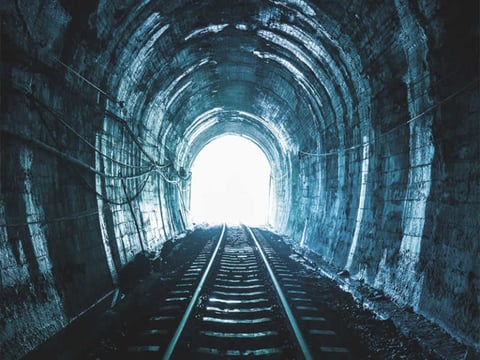Counterpoint
Hal Andrews | June 29, 2017The Train at the End of the Tunnel
The fact that the U.S. faces a looming healthcare crisis is not “fake news”, and unfortunately neither is the lack of courage in Washington, D.C. and state capitals to address the issue.
The healthcare system is a patient in critical care with multiple chronic conditions, and the failure of the political class to treat the patient is magnified by the frequent misdiagnosis of the primary disease. Everyone knows what happens to a patient whose primary disease is not treated, and the healthcare system is no different.The underlying disease of the U.S. healthcare system is widely misreported, with innumerable stories about high charges and lack of competition and poor quality and excess utilization and administrative burdens and failure to follow best standards and defensive medicine and lack of price transparency. While those symptoms are indeed in evidence, they are, to quote the Black Knight, “just a flesh wound”.
The primary, and fatal, disease that is slowly killing the U.S. healthcare system is scarcity. In his 1932 Essay on the Nature and Significance of Economic Science, British economist Lionel Robbins defined the discipline in terms of scarcity:

“Economics is the science which studies human behaviour as a relationship between ends and scarce means which have alternative uses.” As the Business Dictionary defines it, scarcity is the “ever-present situation in all markets whereby either less goods are available than the demand for them, or only too little money is available to their potential buyers for making the purchase.”
Few markets affirm the basic economic principle of scarcity more clearly than healthcare. Healthcare is, by definition, an “ever-present situation” in which both “less goods are available than the demand for them” (i.e. access to care) and “too little money is available to their potential buyers for making the purchase.” Today, America is faced with a double-whammy.
Most consumers, acting individually, have an insatiable desire for healthcare resources for themselves and their loved ones, with no regard for the cost of the services consumed. Some consumers, acting collectively as citizens and voters, if not taxpayers, desire access to unlimited healthcare services without regard to the lack of money to purchase those services.
At the same time, the scarcity of skilled labor, particularly in the form of specialists like dermatology and anesthesiology, clearly demonstrate the effect of a market in which fewer goods are available than the demand for them. The economic impact is broad, from increased charges from hospitals and ASCs trying to recover the cost of the income guarantee demanded by the physician to out-of-network contracting strategies that generate consternation for the consumer with a $6,000 individual deductible.
These examples of scarcity in healthcare are not novel. The U.S. healthcare system has survived because of one precious resource: the commercially insured patient. That resource is increasingly the scarcest resource of all, the fuel on which $3T of the GDP ultimately depends.
It is perhaps appropriate on this day, the Feasts of Saints Peter and Paul, to recognize the fact that the U.S. healthcare system has been robbing Peter to pay Paul for almost 50 years. The tab for Medicare alone is $32.9T in unfunded liabilities. The employer, and in turn the employee, has borne the burden of the consumers and politicians who want a free lunch in the form of unlimited healthcare resources without regard to the cost of those services.
Competition for commercially insured patients is now a negative-sum game, and increasingly so, with 10,000 citizens becoming Medicare eligible every day who are “replaced” by half as many babies born to parents with commercial insurance. Every single day, the commercially insured population declines. Health systems who fail to invest aggressively in growth might as well tie themselves to the train track and gamble that the light at the end of the tunnel isn’t a train.






















.png)

















.png?width=171&height=239&name=2025%20Trends%20Report%20Nav%20(1).png)
